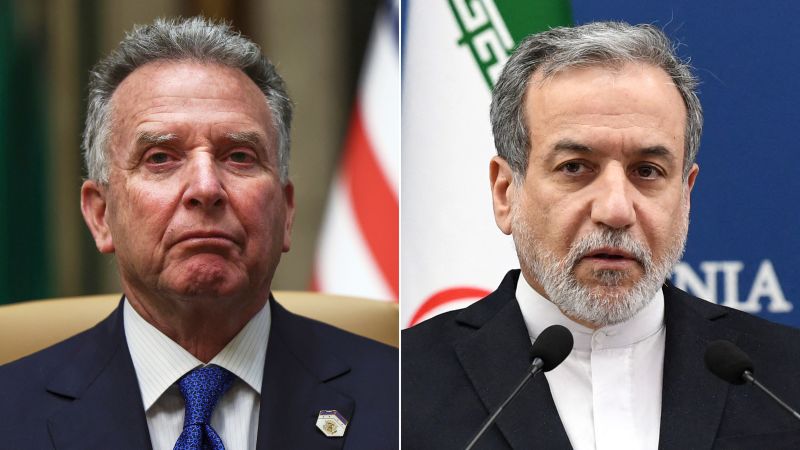In recent developments regarding the ongoing discussions about Iran’s nuclear program, US envoy Steve Witkoff articulated a shift in focus for future negotiations. During an interview with Fox News, he emphasized that the primary objective of the upcoming talks would center around the verification of Iran’s nuclear endeavors, specifically its uranium enrichment activities. While this sets a different tone, Witkoff notably refrained from demanding the complete dismantling of Iran’s nuclear framework, suggesting instead that Iran’s enrichment levels should not exceed 3.67%. This level is considered sufficient to support the operations of a civilian nuclear energy program.
This nuanced stance contrasts with the more aggressive approach taken by other US officials. For instance, just a day before Witkoff’s comments, US Defense Secretary Pete Hegseth underscored the necessity for Iran to fully dismantle its nuclear capabilities. His remarks echoed the earlier sentiments voiced by National Security Adviser Michael Waltz, who has stated that any agreement brokered by the Trump administration would require a total dismantlement of Iran’s nuclear infrastructure. Such calls for complete disassembly are met with defiance from Iranian officials, who claim these demands serve as feeble pretexts aimed at crippling and destabilizing their nation.
Iranian representatives firmly maintain that under established UN treaties, they possess the right to pursue a civilian nuclear program. They perceive the American demands as unreasonable and excessive, particularly in the context of a nation already under considerable economic strain due to existing sanctions. The situation is further exacerbated by warnings from the International Atomic Energy Agency (IAEA), which has highlighted that Iran has accelerated its uranium enrichment to nearly 60% purity—just a whisker away from the 90% threshold that qualifies as weapons-grade material.
Uranium is a potent fuel that can be harnessed either for generating energy or, alternatively, for creating nuclear arms, depending on the enrichment levels. The stakes involved in these negotiations are undeniably high, as the implications could affect not only regional stability but also the broader balance of power in global politics.
As the clock ticks down, Iranian news outlets like the semi-official Tasnim agency have reported that Tehran is setting strict terms for its participation in talks with the US. Key “red lines” identified by Iran include what they describe as threatening rhetoric emanating from the Trump administration and excessive and unrealistic demands concerning their nuclear initiatives. Additionally, they have urged that discussions do not extend into Iran’s defense capabilities—even mentioning their ballistic missile program, which is viewed by many US allies in the Middle East as a looming threat.
Witkoff has expressed optimism following initial discussions with Iranian Foreign Minister Abbas Araghchi, characterizing the talks as positive. They are anticipated to convene again on April 19, with Rome being a possible venue—a city steeped in significant historical and diplomatic negotiations. Uncertainty remains regarding how any potential agreement might differ from the one established under the Obama administration in 2015, a deal from which Trump previously withdrew, pledging ultimately to secure a more robust framework.
Meanwhile, Iran’s Supreme Leader Ayatollah Ali Khamenei reaffirmed a cautionary stance regarding the negotiations. He voiced concerns about repeating previous missteps and cautioned against linking Iran’s internal matters to the outcomes of these discussions. His remarks seem to signal a resilient front against external pressure while acknowledging that the outcome of the talks remains unpredictable.
In the context of these negotiations, Israel has emerged as a vociferous advocate for Iran’s complete nuclear disarmament. Prime Minister Benjamin Netanyahu recently echoed sentiments during a meeting with Trump at the Oval Office, advocating for a Libya-style nuclear deal that would dismantle Iran’s capacities entirely, similar to the arrangement made with Muammar Qaddafi’s regime in 2003. Nevertheless, history weighs heavily on this proposal, as Libya struggled in the aftermath of relinquishing its nuclear program, spiraling into civil war after a NATO-backed uprising led to Qaddafi’s ousting and subsequent death.
Iranian leaders have consistently cautioned against entering into an agreement modeled after Libya’s experience, indicating a profound skepticism about the long-term repercussions of such a deal. As the discussions evolve, the complexity surrounding Iran’s nuclear ambitions continues to pose significant challenges to international diplomacy and peace efforts in the region.



